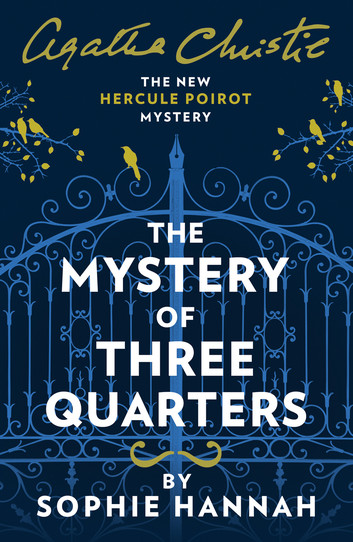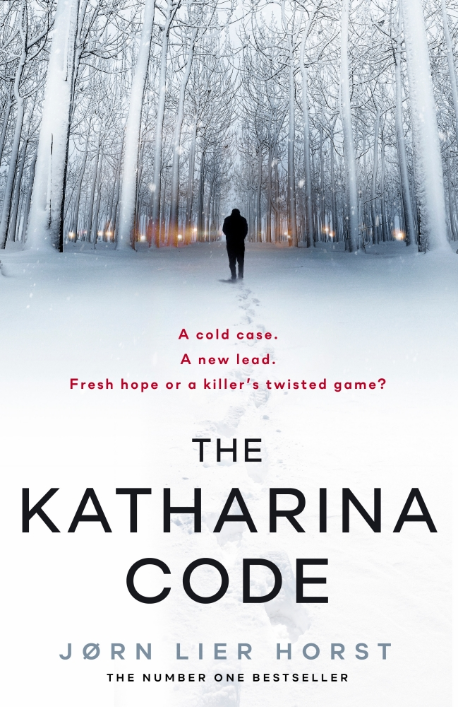I’m a big fan of crime stories. To admit to enjoying Colin Dexter or Lee Child doesn’t have the same social cachet of claiming to be half way through Proust, but crime novels are immensely popular. They are also surprisingly difficult to write well.
Recently, thanks to the generosity of NetGalley, I’ve had two more whodunnits to read. The first, The Mystery of Three Quarters, is an absolutely classic British example of the genre. It’s the latest of Agatha Christie’s Hercule Poirot stories. It’s not actually by Agatha Christie of course – she died in 1976 – but by Sophie Hannah, who is now regularly turning out more books to continue the franchise. The other is from Norway – The Katharina Code by Jorn Lier Horst.
The two stories are very different, yet they share a great deal. The Katharina Code has some elements of a police procedural. A cold cases review team is focusing in on their prime suspect. The detectives are all professionals, using the resources of the Norwegian police to keep surveillance on a man suspected of two separate murders, many years apart. Agatha Christie’s Poirot, by contrast, acts almost entirely as a private individual although he is helped in the mechanics of his business by an Inspector Catchpool of Scotland Yard. (Sophie Hannah has set her story late in Poirot’s life, so the ever-reliable Jupp from Christie’s books is now presumably too senior to do Poirot’s legwork. I did miss him, though.)

Both stories claim to show the detective solving the crime by analysing and playing on the psychology of the suspects. Poirot always claims that it is human psychology that is important in finding the criminal. In the first book he features in – The Mysterious Affair at Styles – he goes so far as to praise the importance of instinct:
“Instinct is a marvellous thing,” mused Poirot. “It can neither be explained nor ignored.”
It’s a nonsense, of course. Christie’s books are the literary equivalent of crossword puzzles – filled with little clues which can be fitted together to point, with no resort to instinct at all, at the villain. The police in The Katharina Code use hidden microphones, online spying and the latest forensics technology to link their suspect to the murders. Still, the psychology of the killer is a central part of both stories.
Sophie Hannah’s approach is more concerned with psychology than many of Christie’s own books, with the key to the mystery being locked in childhood memories that one of the suspects has repressed. Poirot tricks people into the expression of emotions (guilt features a lot) that they might have been unaware of. In the end, though, the mystery is solved conventionally enough. The plot seems unduly elaborate and the red herrings ruddier than ever, but the pieces of the jigsaw come together to reveal the murderer’s face.

The Katharina Code, by contrast is, despite the need to decipher clues and break alibis, much more character driven. At the core of the book is a weekend which the detective spends with the suspect in an isolated cabin in the woods. The two know each other socially and, though it becomes increasingly clear to both that this is an exercise in psychological interrogation, the murders are not addressed directly. Instead, detective and suspect have long conversations about what might drive somebody to murder and the effect that this is likely to have on them. There is a sense of real physical danger (the suspect is hiding a gun in the cabin) but the tension is mostly psychological, ramping up to a violent climax. By then, both the police and an investigative reporter have found the evidence they need to prove the suspect is the killer but that is irrelevant to the two men playing mind games in the gloom of the Norwegian forests.
Hannah has written an archetypal English country house mystery set in Combingham Hall.
No one could have disputed that this was a fine and handsome building. It was surrounded by all one might wish for: attractive lawned gardens and, further from the house, a lake, a tennis court, two cottages, an orchard and a substantial wooded area.
Horst, by contrast, is firmly rooted in the world of Scandi noir.
After walking for 10 minutes Wisting spotted the grey roof between the trees ahead of them. The cabin was situated on a level expanse of ground. Wisting was familiar with the history of the place. It had been a croft… The cabin consisted of a kitchen, living room and two bedrooms with bunk beds. Wisting ducked his head beneath the low doorway and headed for the bedroom he had used last time.
Despite the difference in approach and setting, significant elements of both stories are the same. A murder has been committed and the detectives seek out the murderer. Both detectives are motivated by a strong sense of justice. Wisting says:
“I like to think I contribute to bringing about justice. When someone takes another person’s life, they have to know someone will come after them and hold them accountable.”
Poirot’s view is similar:
“If he was murdered, we must not let his murderer escape justice.”
Both detectives have a certain sympathy for the murderers. Poirot, on learning that the killer will not hang, remarks:
“I concern myself only with bringing to light the facts of the case, and securing the guilty verdict for the criminal, not with the punishment that follows. I leave such considerations to a higher authority.”
Wisting tries to reassure the man he is about to arrest:
“No matter what happened, we can resolve things. It might look hopeless right now, but that’s what my job is – finding a solution to these matters.”
In both cases, as in all whodunnits, the criminal is not only identified, but the solution is unquestionable. There must be no doubt at all that the right person is being blamed for the crime.
Poirot and Wisting are both defined by their role. Although Wisting is given a family, he lives alone (he is a widower) and both detectives are to a degree outside of the situation that they are investigating. They represent external order imposed by society or the state, resolving the untidiness of our crimes and restoring our sense of safety and security.
Murder is, though we worry about today’s violence, still a break from normality. The whodunnit challenges the social order with what is often regarded as the ultimate crime and then, through the intervention of some priest-like figure, normality is restored. Whodunnits, even with multiple corpses and grisly deaths (though none of the deaths in these two is especially gruesome) are essentially reassuring. As the nights draw in, it’s time to sit down with a drink and a good murder story.
